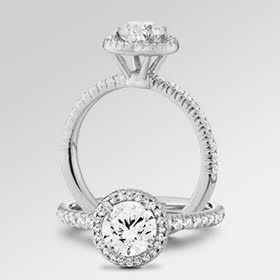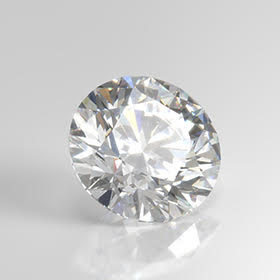Have you started shopping for engagement rings? Before you get started with your wedding shopping, there are several things that you need to consider. Buying a ring that matches your skin tone is important. In this blog, we will talk about how to pick the right Marquise diamond ring that suits your skin tone the best.
What is a Marquise Diamond Ring?
A Marquise diamond is also known as a Marquise-cut diamond. It is a type of gemstone that has been shaped and faceted in an elongated way. It resembles a boat-like silhouette and features pointed ends. It is characterized by its unique shape, which resembles that of a football or a traditional nobleman’s crown. The Marquise diamond has an elliptical shape with pointed ends. Generally, the Marquise diamond features 56 or 58 facets. It depends on whether or not it has a culet, which is a small flat facet at the bottom of the diamond. Marquise diamond engagement ring is quite popular due to this factor.
History of Marquise Diamond Ring
The Marquise cut was inspired by the Marquise de Pompadour reportedly. She was a mistress of King Louis XV of France in the 18th century. This cut is designed to maximize the perceived size of the diamond and to enhance its brilliance by optimizing the reflection and refraction of light within the stone.
However, the marquise cut as we know it today did not gain significant popularity until the 20th century. The cut’s long, narrow shape was particularly suited for enhancing the appearance of a diamond’s size. This makes it appear larger than other cuts of similar carat weight. It made this cut an attractive choice for those looking to maximize the visual impact of their diamond.
During the Art Deco period of the 1920s and 1930s, the Marquise cut experienced a surge in popularity, along with other innovative diamond cuts. Jewelry designers and diamond cutters began experimenting with various shapes and styles, and the marquise cut found its place among these artsy creations.
How to Pick the Right Marquise Diamond?
There are several factors that you need to consider before you buy the right Marquise diamond. Choosing the right marquise diamond involves considering several important factors to ensure you get a beautiful and well-balanced stone. Read on to learn more about how to pick the right marquise diamond:
Understand Marquise Cut: Familiarize yourself with the marquise cut. It's an elongated, boat-shaped diamond with pointed ends. The cut has 56 or 58 facets that provide brilliance and sparkle.
Budget: Determine your budget before you start shopping. Marquise diamonds can vary widely in price based on factors like carat weight, cut quality, color, and clarity.
Cut Quality: Focus on the cut quality, as it greatly impacts the diamond's beauty. Look for a well-proportioned marquise cut with even sides and a well-centered point. The length-to-width ratio affects the diamond's appearance, with a ratio of around 1.75 to 2.25, creating an attractive shape.
Color: Choose a diamond color that suits your preferences. Marquise diamonds tend to show color more prominently at the tips, so opting for a slightly higher color grade (e.g., G or H) can help maintain a white appearance.
Clarity: Inclusions in marquise diamonds may be more visible due to the elongated shape. Look for a clarity grade that doesn't have visible inclusions without magnification. A grade of VS1 or VS2 (Very Slightly Included) is usually a good balance between quality and appearance.
Carat Weight: Decide on the carat weight based on your preferences and budget. Marquise diamonds often appear larger than other shapes of the same carat weight due to their elongated cut.
Symmetry and Proportions: Assess the symmetry of the diamond. Make sure the two halves of the diamond are balanced and that the point is centered. Uneven symmetry can affect the diamond's overall look.
Certification: Always choose a certified diamond. Reputable diamond grading laboratories like GIA (Gemological Institute of America) or AGS (American Gem Society) provide accurate and reliable information about a diamond's characteristics.
Settings: Consider the type of setting you want for your marquise diamond. A solitaire setting or one with accent stones can enhance the diamond's beauty.
Ring Metal: Choose the metal for the ring band that complements the diamond's color. White gold or platinum can enhance the diamond's brilliance, while yellow or rose gold can provide a warm contrast.
Personal Preference: Ultimately, trust your instincts and personal preference. Choose a marquise diamond that resonates with you and reflects your style.
View In Person: If possible, view the diamond in person before making a purchase. This allows you to see its appearance, brilliance, and potential flaws.
Return Policy and Warranty: Make sure you understand the jeweler's return policy and warranty terms in case you need to make any adjustments or returns.
At New World Diamonds, we create the best lab diamonds. Our man-made diamonds are the best alternative to mined diamonds. Check out the New World Diamond website for intriguing diamond jewelry.

marquise diamond ring, marquise diamond engagement ring, Lab Diamonds, New World Diamonds









